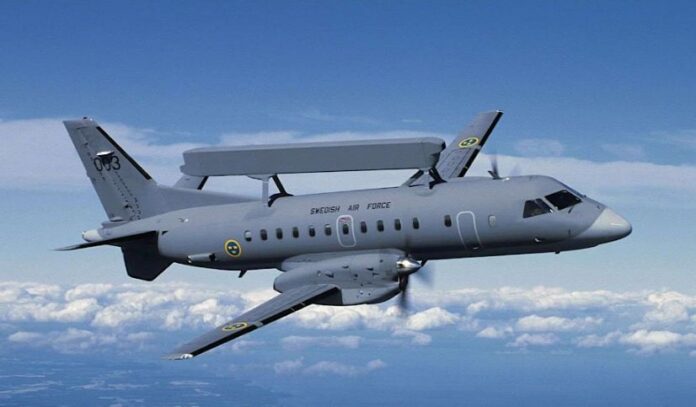Pakistan’s SAAB 2000: A Game-Changer in Airborne Surveillance
The Pakistan Air Force’s SAAB 2000 Erieye AEW&C system is a key part of its air defense strategy,
which was purchased from Sweden to track enemy air movements from a distance and plan a quick response.
This system provides immediate opportunity for action by bringing enemy fighter jets, cruise missiles, and drones on radar from a distance of 400 to 450 kilometers.
The SAAB 2000 not only monitors but also provides excellent instructions to fighter jets such as JF-17, F-16, and Mirage involved in air combat.
It is also the Airborne Command Center of the Pakistan Air Force, which is considered fast and effective according to the geographical conditions of Pakistan.
It is compared to India’s Phalcon AWACS system, which is based on the IL-76 aircraft.
Pakistan deployed its AEW&C capabilities to the frontline after the Balakot incident in 2019 and the February 27 air clash, after which its performance was highly successful.
. The SAAB 2000 aircraft is capable of flying at high speed and high altitude, and can also change base in emergencies. This aircraft can be deployed to multiple air bases to avoid enemy attack.
Capabilities:
Flight duration: The SAAB 2000 can fly continuously for about 9 hours.
Radar range: The Erieye radar system installed in it identifies enemy warplanes, drones, and cruise missiles up to about 450 km.
Cruise speed: The cruise speed of the SAAB 2000 is 665 km per hour.
Altitude: This aircraft performs effective operations at an altitude of 25,000 to 30,000 feet.
Airborne Command Center: This aircraft acts as an airborne command center during air combat, providing real-time instructions to JF-17, F-16, and other fighter aircraft.
This system of the Pakistan Air Force is the backbone of air defense and provides effective operational capability while monitoring enemy movements.



